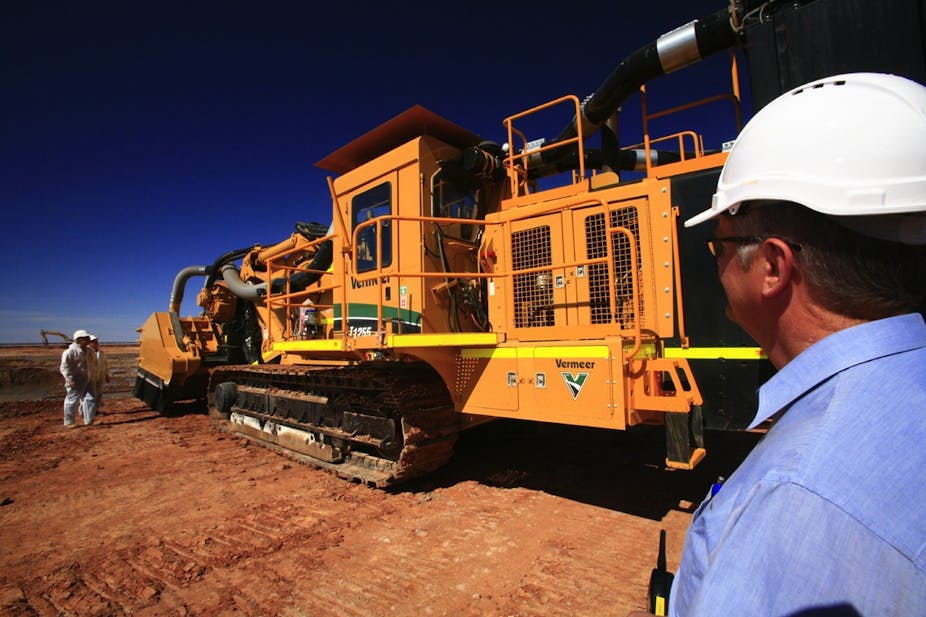A stocktake of research conducted into regional development in Australia shows that we are failing to do sufficient research on opportunities for sustainable growth and prosperity in regional Australia.
Anyone even remotely engaged in the public discussion of regional issues will know that we often get bogged down in the challenges faced by areas outside of our major cities. It is surprising then to learn this pre-occupation with regional problems in the media also extends deeply into the research that we do in Australia.
As one of its first initiatives, the Regional Australia Institute has conducted a comprehensive stocktake of research on regional development since 2000 which was launched last week in Wagga Wagga. The online database of regional research and data we compiled and the associated analysis of this work shows at best 10% of the research undertaken since 2000 is focused on opportunities for growth and development. There is also comparatively little work done to understand the inherent future potential of regions.
This research profile is in stark contrast to the projections for the future of the economy outlined in the recent Asian Century White Paper and the fact that it has been mining (an almost exclusively regional industry) that has driven our national economy in recent years. It also ignores the strong international evidence from the OECD that demonstrates the role that a diversity of regions have played in the growth story of the developed world for the last 15 years.
Importantly, this approach does not reflect policy makers and regional leaders interest and thirst for knowledge about potential and future opportunities which was expressed to us during consultation for the project.
So how do we fix this?
Firstly, we need to rebalance the diverse research already underway on regional issues to ensure we are recognising and exploring the upsides of change.
The stocktake suggested some high level priorities for structuring new research on regional opportunity:
The resource sector and regional areas - what are the best ways for policy-makers to help extend and maximise the benefits (and minimise costs and disruption) for localised and sustainable community advantage?
The Asian Century and Australia’s regional areas - what does regional Australia need to do to position itself to be benefit from the expansion of the Asian economic size and increasing demand?
The major transformative opportunities for regional Australia - what are the lessons and ideas that the current generation of policy-makers need to understand and consider to help enhance confidence to plan future major transformative initiatives?
The National Broadband Network and regional Australia - What are the specific ways of best leveraging off the NBN to maximise its economic and social value in regional Australia?
Enhancing the productivity of regional areas - what are the specific opportunities for regional Australia to pursue productivity-enhancing initiatives? Does the answer lie in “soft” or “hard” investments?
Learning from Australia’s history of achieved potential - what is the recent history of realised potential in regional Australia? What tools will best assist policymakers to replicate these successes in their own localities?
At the RAI we are thinking about work in each of these areas and how we can better define and understand ‘regional potential’ so that regions and governments can explore these issues in planning and policy making. We would encourage others establishing their research plans to also consider how their work can contribute to these priorities.
The key driver of change however will be the attitude and perspective we choose to adopt when thinking about regional Australia.
In looking to the future we can be confident that there will droughts, fires and floods; that exposure of regions to the vagaries of international markets will continue to drive rapid economic change; that our populations will age; and that our natural environments will remain at risk of decline and destruction.
But there will also be massive opportunities for regional Australia in the Asian Century – in resources, in agriculture and in services. These will be driven by the innate strength and innovation of regional businesses and communities. Associated with this will be new investment, new residents, new businesses and a better quality of life for people prepared to have a go in regional areas.
We certainly need to understand the challenges we face and how to respond to them, but we also need research that helps us to recognise and grasp these opportunities. We are by no means doing enough work on this at the moment.

